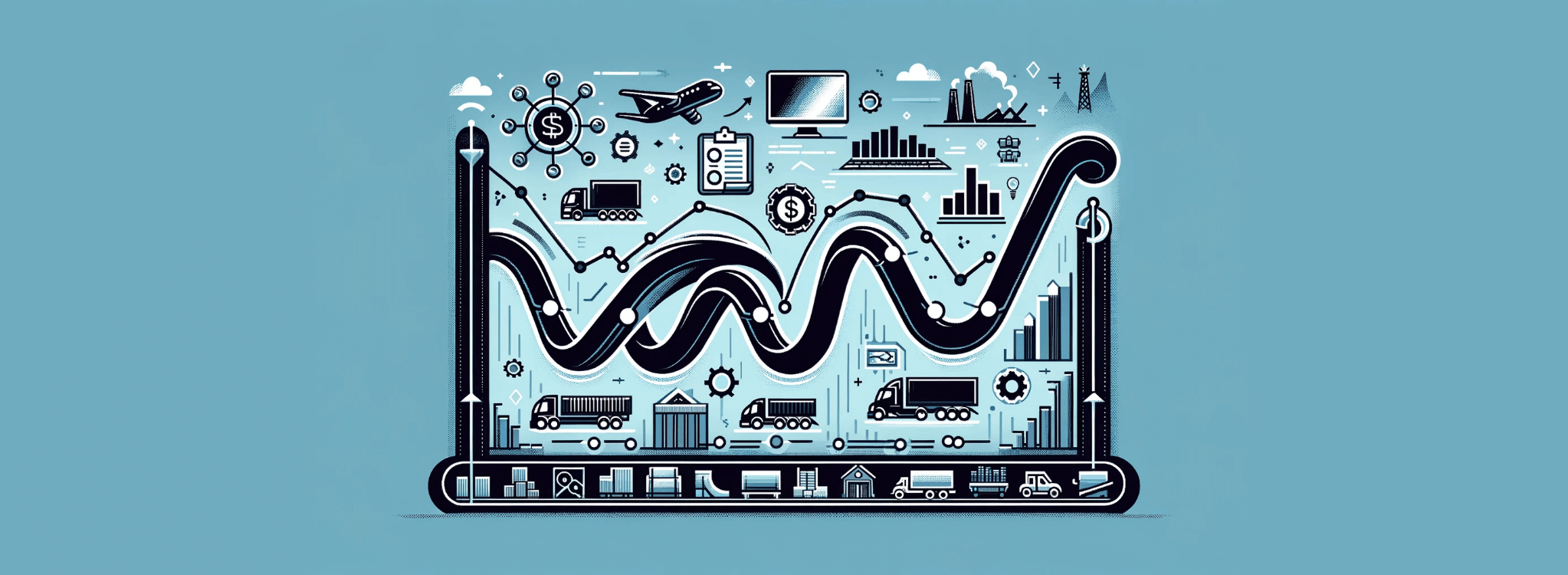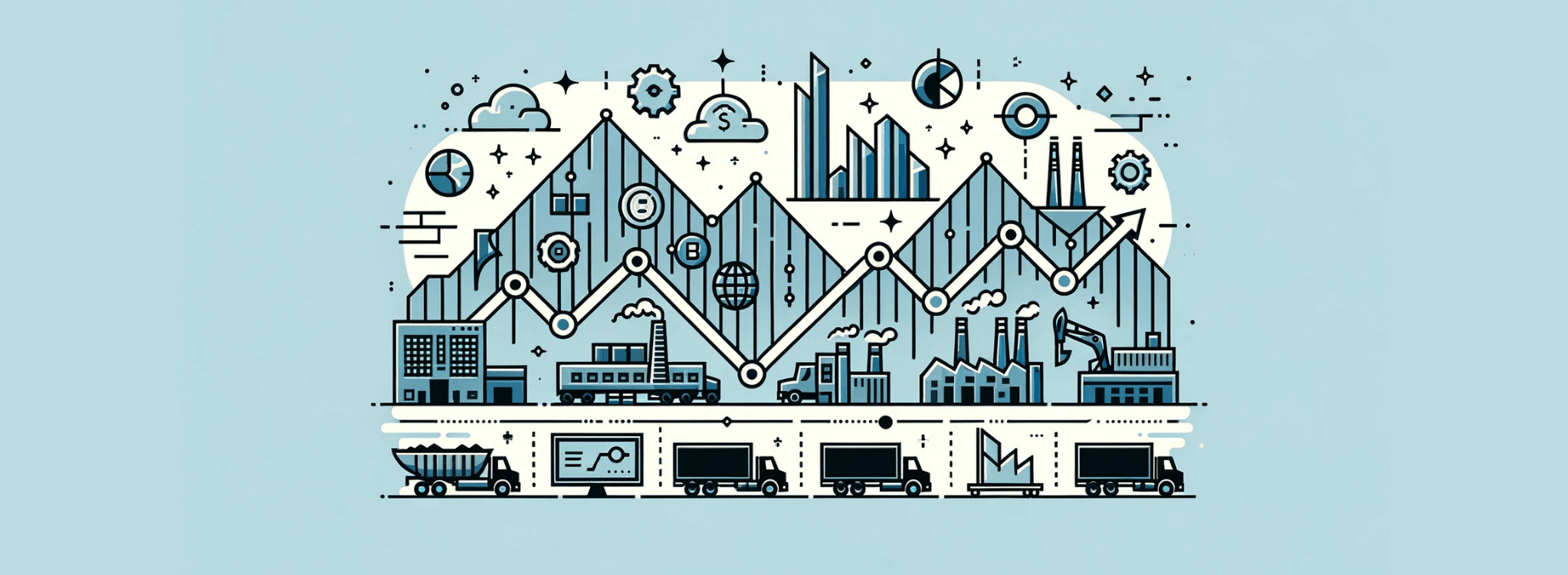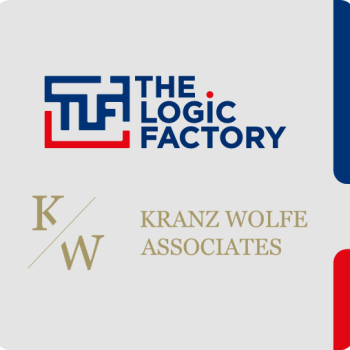Metals Supply Chain Planning: Are You Eating Soup with a Fork?
We know that the metals supply chain is unique. Complexity has consistently characterized planning operations in the industry. While traditional organizational-level targets haven’t changed, the addition of new goals means the playing field is changing—and changing fast.
Today, planners face an impossible task: ensure operational excellence, contribute towards rising profits, and meet sustainability goals. The balancing act has left them with more questions than they can answer, especially when they can’t get the required planning information in time.
In this context, a traditional materials-driven approach doesn’t offer planners adequate decision support. You can use Enterprise Resource Planning (ERP) systems and spreadsheets to create a plan, but it might not be the best plan or even a good one. It’s like eating soup with a fork. You can do it, but you’re making your life significantly harder.
Below, we share eight reasons why your supply chain planning necessitates a different approach and why you should seriously consider it.
1. Green is the new gold
Sustainability is not something to postpone to the future. It is here, and the pressure to execute production in an environmentally friendly way is a pre-requisite – a license to operate.
We are at the precipice of the transition to “green metals.” We know that inventory costs and capacity utilization are parameters in every mid-to-long-term planning decision. Processes and systems are built on “old” parameters such as inventory, cost, and service. The next big challenge will be to include sustainability in the decision-making process.
But how should planners include these green parameters in their supply chain planning? And how can they coordinate such vital information with departments like procurement, production, and ESG?

2. The market rollercoaster is here to stay
With a long (and expensive) supply chain, from base materials to end customers, metals operations are vulnerable to amplified bullwhip effects. It can be hard to keep up with changing market conditions and see through the cycles of several months. If you miss a downturn, you get stuck with inventory. If you miss an upturn, vital profits are lost.
The relative cruise control that characterized planning pre-COVID is nowhere to be seen. In combination with high price fluctuation, demand is becoming increasingly volatile and unpredictable. The companies supplying to the automotive industry, particularly, can testify to the bumpy road in recent years.
The need of the hour is clear. Planners require end-to-end visibility, faster reaction times, and the ability to evaluate different scenarios – a nightmare without an Advanced Planning and Scheduling (APS) tool.
3. Versatility is the blueprint for manufacturing excellence
Over the years, manufacturers have striven to consistently deliver higher-quality metal solutions to their customers. The result is more specialization and increasingly complex product mixes. Managing this assortment of products – “streamers” and “dreamers” – can be challenging for planners.
On the one hand, the predictable demand for streamers lends itself well to traditional stockpiling strategies, given their consistent flow throughout the calendar. This makes a strong case for manufacturing to stock or maintaining inventory for ‘finish-to-order’ demands.
On the other hand, dreamers represent a niche segment of specialized orders that surface sporadically, perhaps only a handful of times annually. Their rarity and high value make them too significant to overlook, yet the impracticality of holding inventory for such unpredictable orders complicates planning.
Juggling dreamers and streamers, along with the diverse strategies they necessitate, multiplies the intricacy of supply chain planning tenfold. The essence of manufacturing excellence lies in the capacity for agility; the ability to dynamically fine-tune production strategies in response to fluctuating demands is invaluable.
To overcome this, your planning teams need a tool offering end-to-end visibility of your operations and real-time data to illustrate how changes in one parameter can impact the entire plan. The question is: do you have one in place?
4. Metals manufacturing needs more than material-driven planning
Utilizing a standard Bill of Materials (BoM) for production is possible in other industries but not in metal manufacturing. This is partly due to the variation in raw materials. Additionally, despite advancements in the manufacturing process, producers still end up with products and intermediates comprising a spread of differing characteristics, albeit within tolerances. The problem is that differences in the end product might be acceptable by one customer and not by another.
Matching the characteristics of different materials with demand offers a huge opportunity to minimize costs, optimize inventories, and reduce waste. However, it adds complexity. Even matching five materials with five customer orders, each with its requirements and variances, is a dizzying puzzle.
Extending this to many products creates a problem the human brain cannot solve. And a standard material-planning approach is definitely out of the question.

5. The route to optimal efficiency is long and winding
Metal production has not changed fundamentally. However, with increasing specifications, organic growth, and corporate mergers or spinoffs, manufacturing processes are now spread across different plants/facilities. The “all-in-house” approach is no longer the standard.
Sound tactical planning, strong communication, and coordination have become necessary to “steer the flow” of metals over lengthy routings and different facilities. End-to-end (E2E) planning is no longer a consultancy buzzword but a reality.
Using ERPs or other legacy planning tools and the material-requirements approach for E2E planning is just impossible.
6. Maximizing capacity utilization is not so easy
The industry is capital-intensive, and even a reduction of 1% in costs can save millions. Plus, more efficient use of resources and materials is a quick and essential step to more sustainable metal production.
That’s why the importance of lot sizes, batch sizes, and campaigns cannot be underestimated. Combining smaller orders into one efficient batch will make your operations more cost-effective and, at the cost of mentioning it too many times, more “green.”
Well-planned campaigns avoid set-up time and critical energy losses associated with idling and waiting times. Can you manage changing campaigns and flexible lot sizes in a standard ERP system?
7. Wandering bottlenecks call for real-time updates
In many industries, the bottlenecks are clear. In metals, however, it’s hard to know where they will pop up along the supply chain. Minor tweaks in product mix or critical underperforming installations can change the bottlenecks in the mill and create the so-called “wandering” bottlenecks within just a few weeks.
These situations are idiosyncratic to metallurgy and metal manufacturing processes. Plans that rely on fixed bottlenecks and ignore potential hiccups are destined to fail. Different departments in your organization need one source of the truth (in terms of data) and complete visibility to stay in control and ensure such blips are accounted for.
8. True optimization comes from having a single unified view
Every planning decision impacts another. It can influence the cost position, inventory levels, service quality, and the environment. Raw materials, alternative routings, substitute recipes, and orders spread over different resources result in many complex choices.
At the same time, localized planning, silos, and multiple spreadsheets manifest a compounding effect of errors and seriously delay the decision-making process.
The key is transparency across the supply chain – a single source of truth for all stakeholders. When all departments have the same view and shared data, they can plan and collaborate better. They work according to organizational KPIs and include new metrics like scrap-level avoidance or sustainability targets. This is where the journey towards sustainable optimization begins.
Complexity is growing, but help is at hand
Metals manufacturing is a one-of-a-kind industry with specific needs. While the manufacturers’ goals within it haven’t necessarily changed, there is a storm brewing. Efficient supply chain planning will be critical to success, but standard practices using legacy solutions and spreadsheets aren’t built to accommodate the growing complexity.

Your organization needs a solution that can take in all the variables in your supply chain and integrate with your existing IT infrastructure. Moreover, it should empower your planners to decide confidently with specific features that allow demand forecasting, alternate scenario analyses, and logistics planning.
However, technology is only one part of the puzzle. It’s essential to prepare your teams for the transformation. And that’s where having an experienced partner is crucial. The combined expertise of The Logic Factory and Kranz Wolfe can deliver a solution and support that’s flexible and configurable to the complexity and constraints of your business and provide the knowledge you need to make it work. The rewards can be huge. At the very least, you know you have a spoon to eat your soup.






